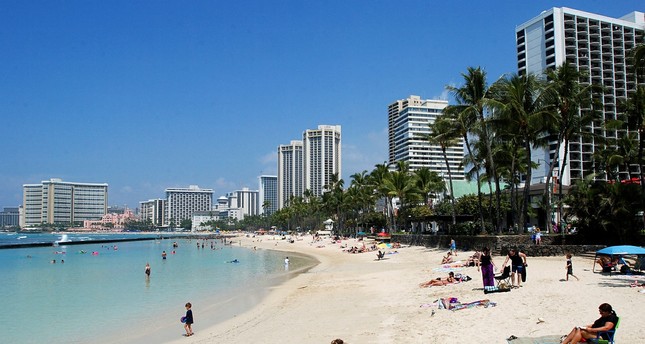According to the Bloomberg’s report, the State Department’s actions to enhance visa screening will affect 5 million annual travelers as the new policy covers nations with millions of business travelers and international tourists, including Brazil, Mexico, China, Argentina, Colombia, and South Africa.
Donald Trump’s travel ban already resulted in a worldwide 6.5 per cent drop in the number of airline bookings for travelers headed to the United States even though the ban was later on lifted.
If the trend of lower demand continues, it could cost the US tourism industry upward of $3billion, according to Mother Jones magazine
Last week, the U.S. Travel Association issued an almost plaintive statement: “Mr. President, please tell the world that while we’re closed to terror, we’re open for business. Imbalanced communication is especially susceptible to being ‘lost in translation’—so let’s work together to inform our friends and neighbors, who could benefit from reassurance, not just who is no longer welcome here, but who remains invited.”
The USTA usually refers to the century’s first 10 years as “the lost decade” for U.S. due to restrictions imposed after the 2001 terror attacks, coupled with unpopularity of President George W. Bush administration, and the Great Recession.
However, market strategy firm Tourism Economics LLC estimates a 4.3 million decline in international arrivals because of Trump’s rhetoric, with popular destinations like New York City, Los Angeles, and Miami are being exposed to it.
“The travel ban is not having a material impact yet. But we are seeing the unintended consequences of this now because the message has gone around the world that the U.S. is not open for business,” the World Travel and Tourism Council (WTTC) President David Scowsill said.
The travel and tourism sector’s contribution to the U.S. gross domestic product (GDP) is expected to grow by 2.3 percent this year, a slowdown from an expansion of 2.8 percent seen in 2016, the WTTC said on Monday.
Growth will be driven by trips from the United States to elsewhere as the strong U.S. dollar makes it cheaper for Americans to travel to destinations in Mexico and the Caribbean.
“Overall the U.S. is still robust,” Scowsill said. “The most important thing is that we get to the end of this (travel ban) situation,” he said.
The U.S. travel and tourism sector is the biggest in the world, accounting for $1.5 trillion, or around 20 percent of the world’s travel and tourism GDP contributions.
Globally, the sector’s contribution is expected to grow by 3.8 percent this year, generating $7.9 trillion and accelerating from a 3.3 percent increase in 2016.
Some destinations suffered last year as attacks prompted travellers to head elsewhere, with tourist spending dropping in Belgium, France and Turkey. But the WTTC said that consumers switched to other destinations such as Bulgaria, Cyprus or Spain rather than putting off travel altogether.
“In Europe, people have still been getting on airplanes and travelling. They just haven’t been going to those places, Scowsill said.
Source:Daily Sabah
 AP Photo
AP Photo